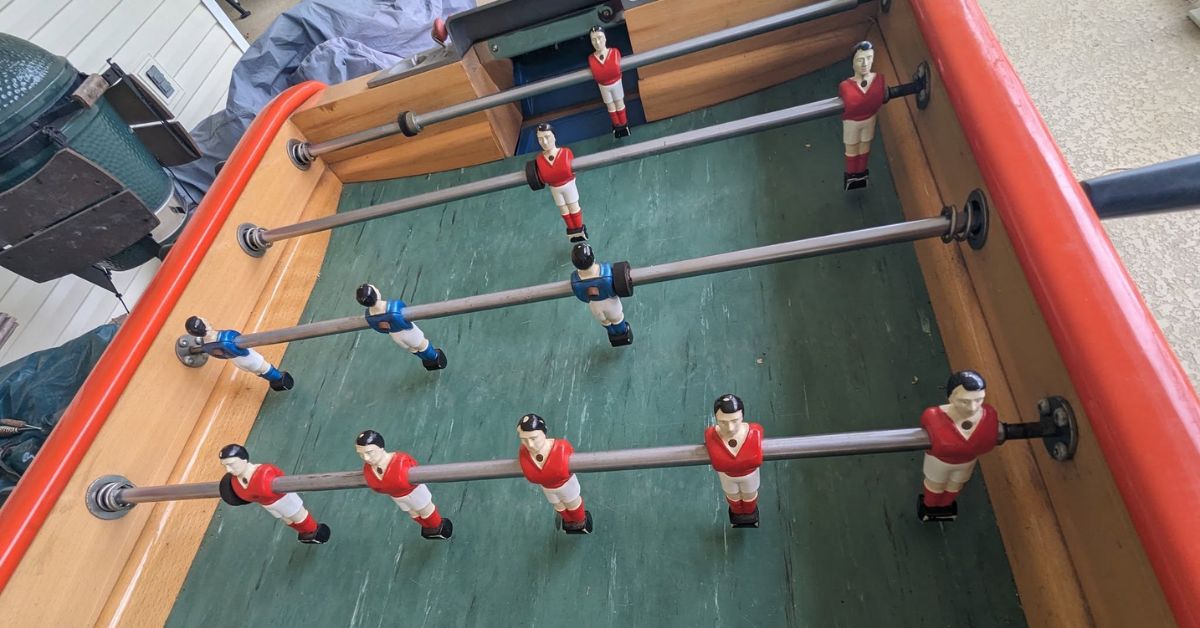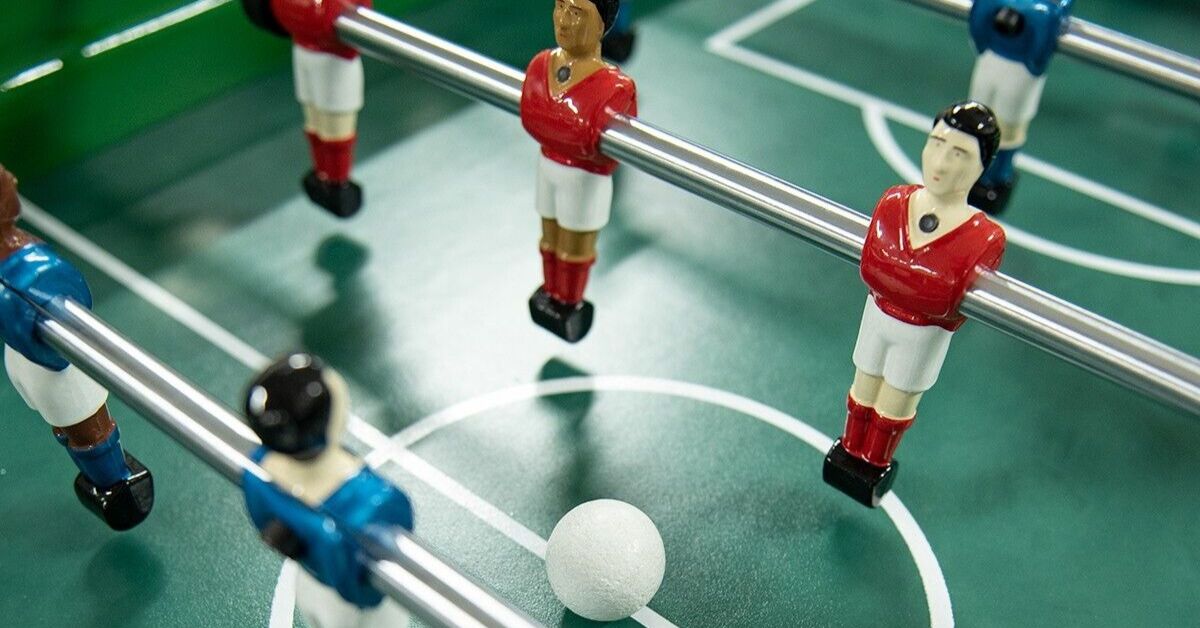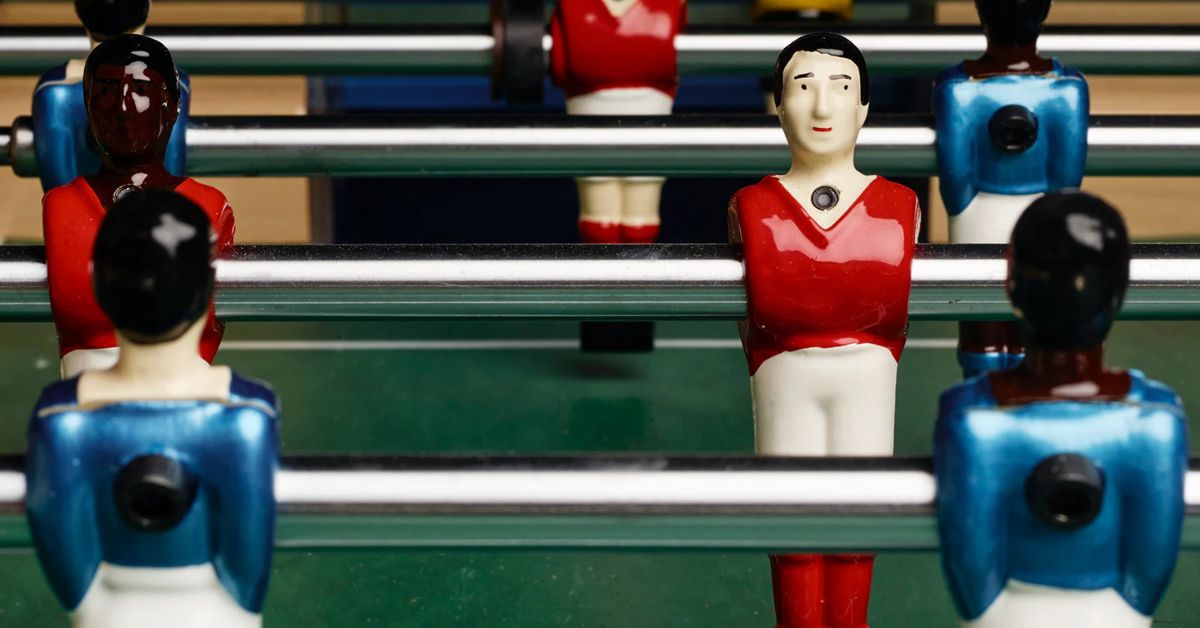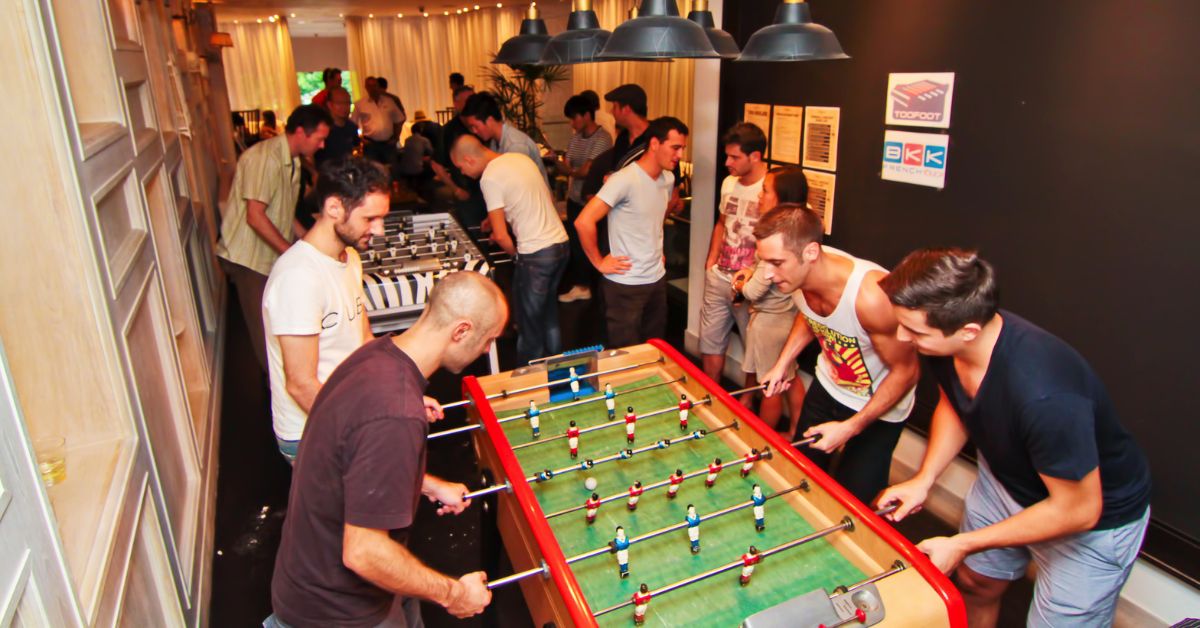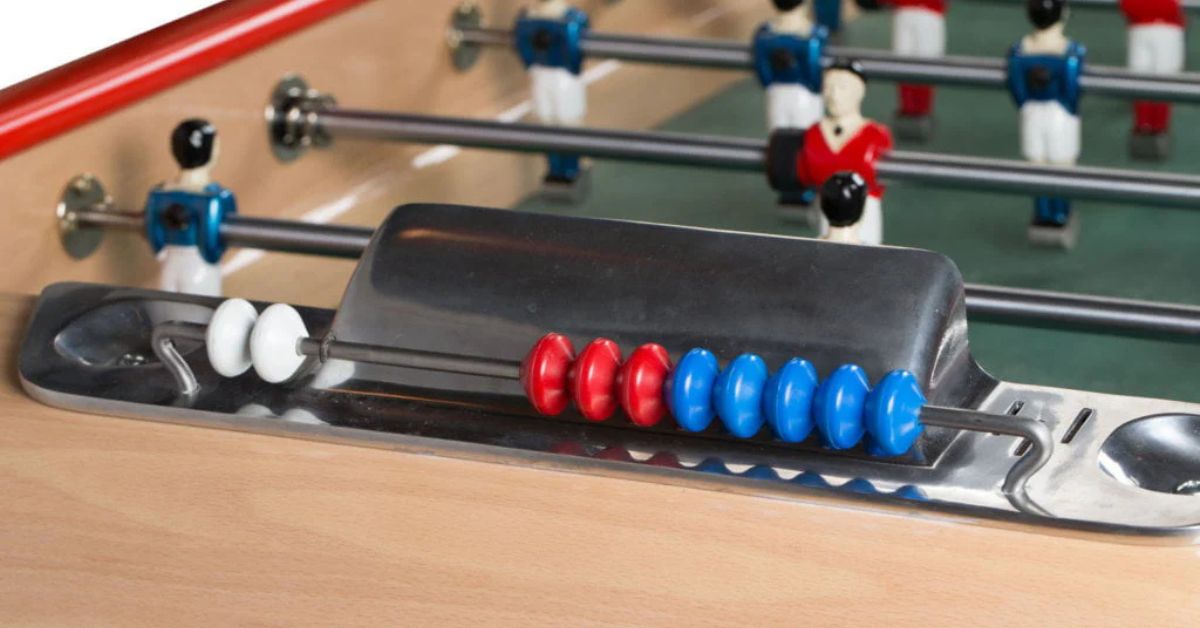A high-quality foosball table is an investment that deserves proper care. Whether yours is in a bar, restaurant, or home game room, routine cleanings with the proper techniques are essential. From touching up the figurines to applying lubrication, each step matters. Here are common mistakes to avoid when cleaning a foosball table and the correct methods to use instead.
1. Skipping Regular Dusting
Neglecting to dust your foosball table allows dirt and debris to accumulate, which can interfere with gameplay and damage the table over time. Dust particles act like sandpaper and slowly wear down the surface with scratches.
Use Compressed Air for Hard-To-Reach Places
Regular dusting keeps your table in optimal condition. Use compressed air to reach those tricky spots where a cloth might not fit. This method is perfect for nooks and crannies around the rods and corners of the playing field.
Use a Dry Microfiber Towel To Collect Dust
A dry microfiber towel is ideal for collecting dust from larger surfaces. Its soft fibers trap dust particles effectively without scratching the table. Make dusting a weekly routine to maintain a clean and smooth playing field.
2. Using Excessive Water for Cleaning
Water might be your go-to for everyday cleaning tasks, but it’s a foe of foosball tables. Excess water can damage both the playing field and cabinet. The playing field, typically made of vinyl or similar materials, can warp, bubble, or peel when exposed to moisture. This drastically impacts gameplay and leads to costly repairs.
Models like the Bonzini babyfoot table feature cabinets crafted from premium solid and laminated beechwood. These materials are highly susceptible to water damage. Even the legs, made of solid beechwood, will absorb moisture and result in a swollen, weakened structure.

How To Properly Clean the Beechwood Cabinet and Legs
Diluted White Vinegar
Mix one part white vinegar with four parts water to create a gentle cleaner. Dampen a soft cloth with the mixture—ensure it is only slightly damp, not soaked—and wipe down the beechwood surfaces. This method removes dirt and grime without risking damage to the wood. After cleaning, use a dry cloth to remove any excess moisture.
Dish Soap With Water
While you need to avoid going overboard with water, a mixture of dish soap and water is still a reliable cleaning method in moderation. Add a small amount of mild dish soap to a bowl of water. Dip a soft cloth into the soapy water, then wring it out thoroughly to avoid excess moisture.
Lightly wipe the beechwood surfaces with the damp cloth, addressing any spots or spills carefully. Once the area is clean, immediately dry it with a separate, soft cloth to ensure no water remains on the surface.
3. Applying Harsh Chemicals
Using harsh chemicals on your foosball table might seem like a fast way to remove stubborn stains, but it often causes more harm than good. Many cleaning products contain abrasive substances that strip away protective coatings and degrade the materials of your table.
Bleach-based cleaners, for example, may cause discoloration and weaken the structure of the foosball table. Isopropyl alcohol is an excellent alternative, especially for vinyl playing fields. This substance effectively cleans without harming the surface.
4. Never Lubricating the Rods
The rods of your foosball table are crucial to the game’s fluidity. Neglecting lubrication increases friction, making the rods harder to maneuver and causing wear and tear. These rods, usually made of steel, require regular lubrication for optimal performance.
Synthetic lubricants are perfect for this task. They provide smooth motion without attracting dust and dirt. To start, pull the telescopic rods as far as possible on each side, and use a paper towel to wipe off any old lubricant.
Next, add one drop of multipurpose synthetic lube in the middle of each rod. This minimizes friction between the outer and inner rods. Push the rod inward to spread the lubricant evenly, then spin each rod several times to ensure full distribution.
5. Overlooking the Foosball Figurines
The foosball figurines are the stars of the game, yet they’re sometimes overlooked during cleaning. Bonzini creates durable, kiln-painted solid aluminum figurines. To keep them looking shiny and new, remember to clean them.
How To Properly Clean Foosball Figurines
Isopropyl alcohol works wonders for this task. Apply a small amount to a soft cloth, and gently wipe down each figure. This removes dirt and grease without damaging the color or integrity of the aluminum. Follow up by wiping the figurines with a dry cloth to remove any remaining residue.
While cleaning, inspect the figurines for loose screws or damage. Tighten any loose parts, and consider replacing damaged players to keep the game fair and enjoyable.

6. Failing To Clean the Foosballs
The foosballs themselves collect dirt just like the table. Players rely on the smoothness of the foosballs for accurate shots and gameplay flow. Dirty foosballs affect gameplay by creating an uneven and unpredictable surface. Neglecting their cleanliness causes frustrating matches and diminished enjoyment for players.
Should You Clean Cork Foosballs?
Cork foosballs present a challenge. Due to their porous nature, cleaning them is difficult. Replacing dirty cork foosballs is usually the best option. Fresh cork balls maintain the quality of the game and prevent damage to the table.
How To Clean Composite Foosballs
Once again, isopropyl alcohol is the go-to product. Simply use some to dampen a cloth, and wipe down each ball for a thorough cleanse. This method effectively eliminates grime while restoring the ball’s original, sleek finish.
7. Neglecting To Use a Well-Fitted Table Cover
The final mistake that foosball table owners make when cleaning their table is failing to cover it after cleaning and when not in use. Ignoring this step allows dust and debris to settle on the playing surface. A quality cover acts as a shield, preventing dust accumulation and accidental spills from reaching your foosball table.
When selecting a table cover, search for durable, water-resistant materials such as heavy-duty vinyl or a blend of polyester and PVC. These materials offer robust protection against environmental factors and are easy to clean.
Using a table cover can also reduce your overall cleaning workload, making regular maintenance more manageable. Remember, the better the protection, the longer your foosball table will last.
Bonzini is a long-lasting company with a rich history of high-quality foosball tables. Take these steps to clean and maintain your foosball table, and you will enjoy it for years to come.





